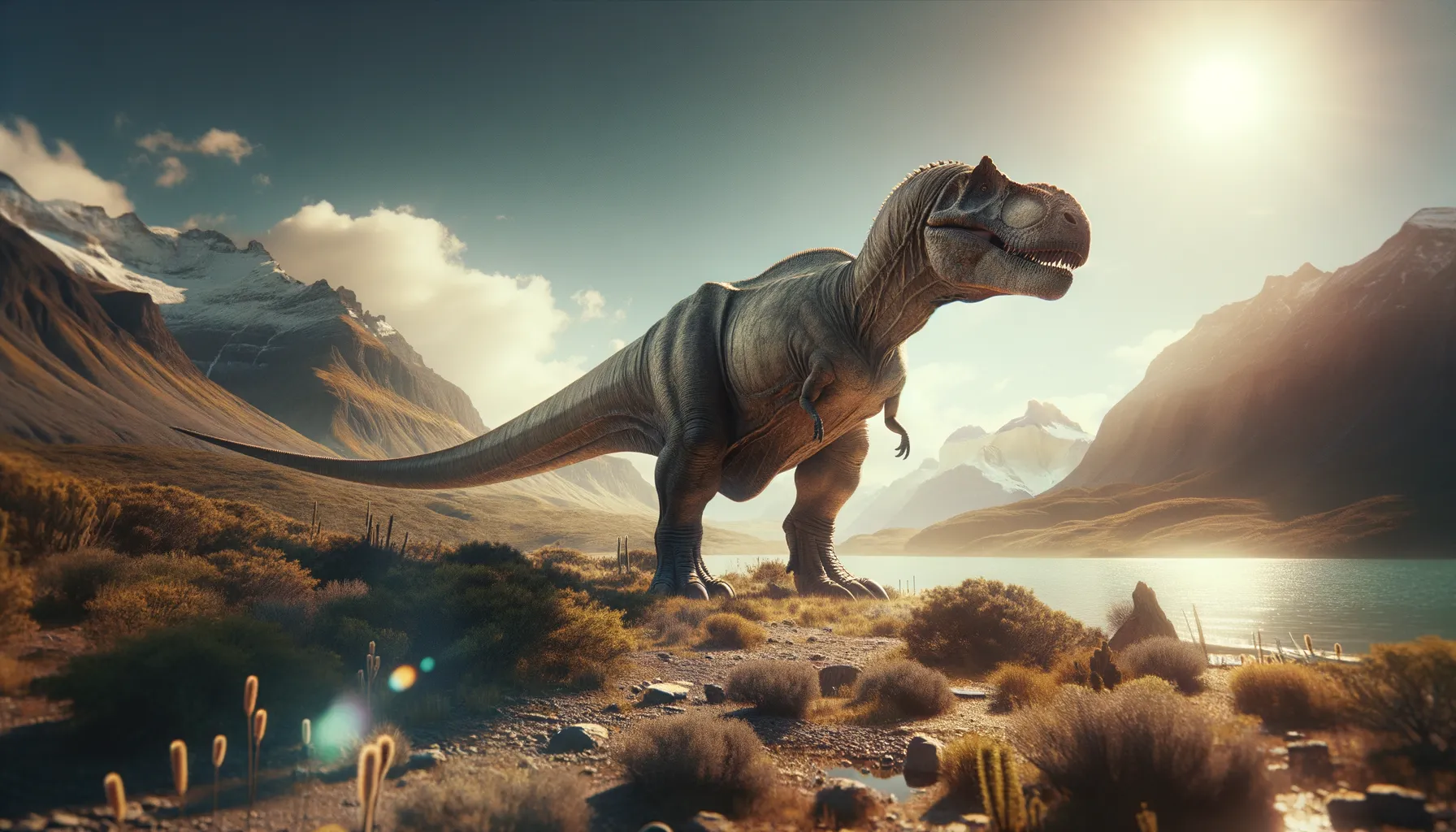
Dreadnoughtus
Colossal creature, truly fearless titan.
Period
Cretaceous
Length
Approximately 26 meters, a massive length.
Height
About 13 meters tall, towering presence.
Weight
Around 65 tons, one of the heaviest land animals.
Dreadnoughtus was a colossal sauropod dinosaur discovered in Patagonia. Among the largest land animals ever, its massive size offered protection from predators. Its name, meaning 'fears nothing,' reflects its defensive advantage. The well-preserved fossils have provided valuable insights into its structure, weight, and lifestyle, making it a key subject for paleontological study.
Diet
Dreadnoughtus was herbivorous, feeding on vast quantities of plants. It likely consumed leaves, ferns, and coniferous foliage available in its habitat.
Hunting
As a herbivore, Dreadnoughtus did not hunt other animals. Its primary challenge was reaching and processing large amounts of plant material.
Environmental challenges
Dreadnoughtus faced challenges such as finding sufficient food to sustain its massive body. Navigating dense forests must have been cumbersome for such a large creature. Seasonal changes could also pose risks to its food supply and water sources. Additionally, natural disasters like floods or droughts could impact its habitat and resources.
Speed
Very slow due to its enormous size.
Lifespan
Estimated to be several decades long.
First discovery
Found in Patagonia, Argentina in 2005.
Fun Facts
- Dreadnoughtus was an enormous dinosaur that lived about 77 million years ago during the Late Cretaceous period.
- Its name 'Dreadnoughtus' means 'fears nothing', reflecting its massive size which offered protection against predators.
- Dreadnoughtus is estimated to have been over 85 feet long and weighed about 65 tons, making it one of the largest land animals ever discovered.
- This gigantic dinosaur lived in what is now Argentina, and its fossils were discovered in the Patagonia region.
- Unlike some predatory dinosaurs, Dreadnoughtus was a herbivore, feeding on plants and trees to sustain its massive body.
- The bones of Dreadnoughtus are some of the most complete specimens ever found, giving scientists valuable insights into its size and structure.
- Its long neck allowed Dreadnoughtus to reach high into trees for leaves, similar to how giraffes feed today.
Growth and Development
Dreadnoughtus grew rapidly, needing a large intake of nutrients to support its size. Juveniles experienced a quick growth spurt, which was crucial for survival. The bones exhibit growth rings, similar to trees, helping scientists estimate their age and growth rate. Their immense size was a result of both genetic factors and abundant food resources.
Habitat
Dreadnoughtus lived in an environment abundant with forested areas and water resources. These regions would have supported diverse plant life, critical for their dietary needs. The climate was likely warm with varying wet and dry seasons. Rivers and floodplains in the area provided ample hydration.
Interaction with other species
Dreadnoughtus coexisted with various other dinosaur species and smaller fauna. Although not a predator, its presence influenced the local ecology. Smaller species might have stayed clear due to its sheer size. It likely shared habitat with a variety of herbivores, competing for similar plant foods.
Natural lifespan
Dreadnoughtus likely had a long lifespan, possibly reaching up to 70 years.
Reproduction
Dreadnoughtus reproduced by laying eggs, similar to other sauropods. Clutches were likely laid in secluded areas for better protection. The young were vulnerable at birth and required rapid growth to gain size for defensive purposes. Parental care is uncertain, but some level of nesting protection might have occurred.
Social behaviour
Dreadnoughtus may have lived in herds, offering protection and social interaction. Herd behavior would have enhanced feeding efficiency by locating new food sources. The large number of eyes in a group could also detect predators more effectively. Social grouping provided benefits in rearing young collectively.
Fossil locations
Dreadnoughtus fossils have been predominantly found in Patagonia, South America. The site where it was discovered has provided the most complete remains of this species. These finds have contributed significantly to our understanding of sauropod dinosaurs. Fossil evidence continues to emerge as further excavations are conducted in the region.
